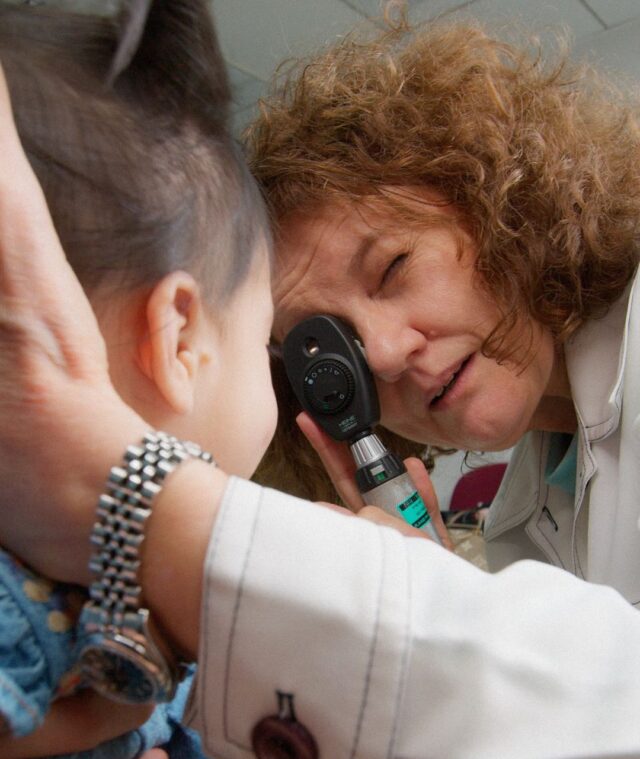Image by vishnu vijayan from Pixabay
Retinal tears and detachment are medical emergencies. Retinal damage needs immediate attention from an ophthalmology clinic in Dubai if long-term damage and even blindness are to be avoided.
Here, we’ll explain:
- What your retina is and why it’s important
- What retinal tears are and how to avoid them
- What the potential symptoms of retinal damage are
- How retinal detachment can occur and how it can be catastrophic
- What the treatment options are
- What to do if you suspect either
What is the retina?
The retina is a thin layer of tissue at the back of your eye. It detects light signals and passes the information from them to your brain. The retina is essential to your sight. Damaged or detached retinas can cause very serious problems to your vision and should be taken very seriously.
What is a retinal tear and how can I avoid one?
A retinal tear is damage to the retina. Most retinal tears occur when the jelly-like substance (vitreous) that sits in front of the retina sticks to it and pulls at it.
The vitreous part of our eyes is fluid and will usually move around without causing any problems. However, as we get older, the texture of the vitreous changes. It may get thinner and start to shrink. If this happens, there is a danger that it may stick to and pull at the retina and cause a tear.
Retinal tears, therefore, are more likely to occur in older people. However, there are other risk factors that may affect all age groups. They are:
- Nearsightedness
- Being a previous eye surgery patient
- Taking glaucoma treatments
- Having a family history of retinal detachment
- Having had a retinal detachment in the other eye
- Having weaknesses in the retina (which can often be detected by an ophthalmologist)
Most causes of retinal damage are very hard to avoid. Vigilance and recognising symptoms are the keys to avoiding more serious damage.
What are the signs that I may have retinal damage?
All these signs should be checked by an eye doctor as soon as possible. They all indicate you may have a retinal tear or other serious vision problem.
1. Flashing lights
People with retinal tears often report seeing flashing lights or stars in their field of vision.
2. Floaters
Do you have tiny specks floating around in your vision? This may be a sign that the vitreous jelly in your eye is disturbed and that you may have retinal damage.
3. Shadow
Some people report shadows in their side (peripheral) vision.
4. Curtain or blur
Similarly, a greyish curtain or blurry patch may obstruct part of your vision if you have retinal damage.
What is retinal detachment?
One of the biggest dangers of a retinal tear is that it will progress further into a full retinal detachment. If fluid leaks through a retinal tear, it can cause the retina to fully lift away from the tissue beneath. Retinal detachment can also occur through accidents and trauma to the eye.
The retina cannot work when detached and you may become blind in that eye. Therefore, immediate treatment is necessary.
What are the treatment options?
Detached retinas are most often repaired surgically. The success rate is between 80-90% for a single operation. This means that one or two people out of every 10 may need further surgery or that their vision may not recover well long-term. The likelihood of initial surgery working is improved when it happens within 24 hours of symptoms beginning.
There are currently three surgical options for retinal detachment: pneumatic retinopexy, vitrectomy, and a scleral buckle. These can be combined to enhance efficiency of the repair.
With pneumatic retinopexy, a small gas bubble is injected into the eye. This pushes the retina back into the right place and allows it to heal. Over time, the gas is replaced by natural fluids in the eye. With this option, you must keep your head in a specific position for several days so that the gas bubble does not move.
In a vitrectomy procedure, the surgeon removes any vitreous that is pulling on the retina and causing the damage. The vitreous is replaced by a gas or oil bubble and then the procedure works as above. If your surgeon uses an oil bubble, it must be removed after a few months.
A scleral buckle is a small piece of plastic or rubber that is sewn onto the eyeball. It exerts gentle pressure that helps keep the layers of the inner eye together and allows the retina to heal in the right place. A scleral buckle cannot be seen after the procedure and it is often left on permanently.
What to do if you suspect retinal damage
Take the four potential signs of retinal damage (flashing lights, floaters, shadows and curtains) very seriously and act immediately. Contact an ophthalmology clinic in Dubai right away for advice. They will almost certainly want you to attend the office to check your symptoms and for treatment as necessary.
If you ignore the signs of retinal damage, it could get much worse and become harder to treat, so don’t delay.








